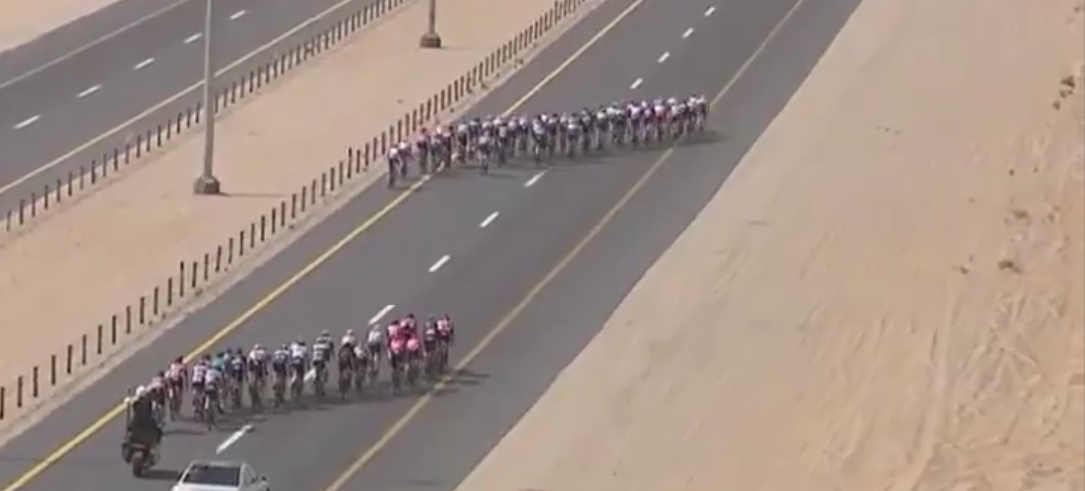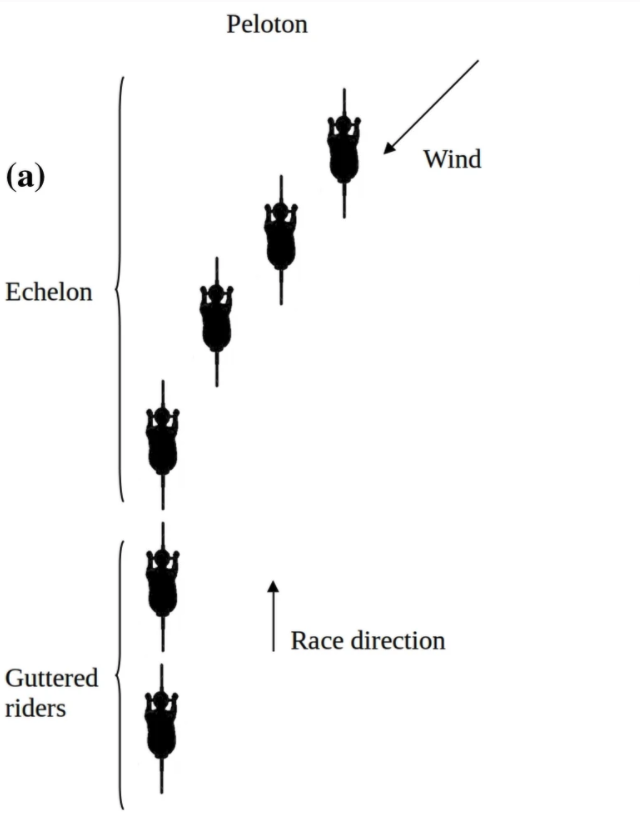Study confirms the least ideal place to ride in a crosswind
Why you should do your best to avoid being guttered in an echelon

This year’s windy UAE tour featured some great examples of echelon formations. If you’ve ever ridden in a crosswind you’ll know that it can slow you down way more than you’d expect and make handling your bike much harder.
In crosswind conditions pelotons reorganize and shift into what is called an echelon formation. The diagonal line of riders minimizes the lateral forces of the wind (and creates a striking overheard image).
Ok, this is art ? pic.twitter.com/Lotlwogr91
— Deceuninck-QuickStep (@deceuninck_qst) February 21, 2021
Echelons behave mostly like a traditional paceline. Riders take pulls on the front then filter back in the slipstream of those ahead. However, to accommodate a crosswind, the rotation will file back from the leading rider diagonally—swinging to the left if the wind is coming from the right and vice-versa as each rider maximizes their draft.
While there have been previous wind tunnel studies on the effects of lateral forces on single riders, a new wind tunnel study from the University of Lyon was the first to look into aerodynamic drag and lateral forces in a group of road cyclists forming an echelon under crosswind conditions.
Guttered
The study found that an echelon formation is only worth being adopted by a group if the lateral force of the wind is beyond a 30 degree yaw angle.

If you’ve ridden in an echelon before you know that being “guttered” (riding just behind the echelon group) is a surprisingly difficult position to recover from. This study, which looked at a four rider echelon, was able to quantify just how much drag a guttered rider experiences.
At a 30 degree wind (yaw) angle, a sheltered rider within the echelon experiences less than 30 per cent of the drag of the guttered rider behind the echelon. At a 50 degree yaw, the guttered rider experiences a 3.4 times larger drag and a 4.9 times larger lateral force than the most sheltered rider of the echelon.
Riders in a guttered position will also be much more likely to get dropped if they leave any space at all between themselves and the rider directly in front of them. The drag and lateral forces they are experiencing increase by a factor of two when the wheel-to-wheel distance increases from 10cm to 1m.
Avoiding being guttered
Hopefully, if you’re riding with friends you won’t be guttered and dropped, but in a race situation all bets are off. Luckily, there are a few ways to avoid being guttered in a race.
Pay close attention to the wind direction—look out for flags, tall grass or other lightweight, movable objects to figure out exactly where it’s blowing from. If you’re racing on a gusty day it’s worth researching the wind direction and reviewing it in the context of the race course.
Positioning is key, consider to the wind direction when you’re coming up to any turns in the course and place yourself closer to the font of the group. If an echelon forms when the bunch hits a crosswind you’ll want to be as far from the back of the group as possible.
Finally, if you find yourself in an echelon with a few guttered riders remember that those hanging on behind are working much harder than you. If your goal is to create a breakaway group, and you know you can maintain an aggressive pace for a little bit longer, it may be worth pushing hard until they eventually fall off your wheel.
